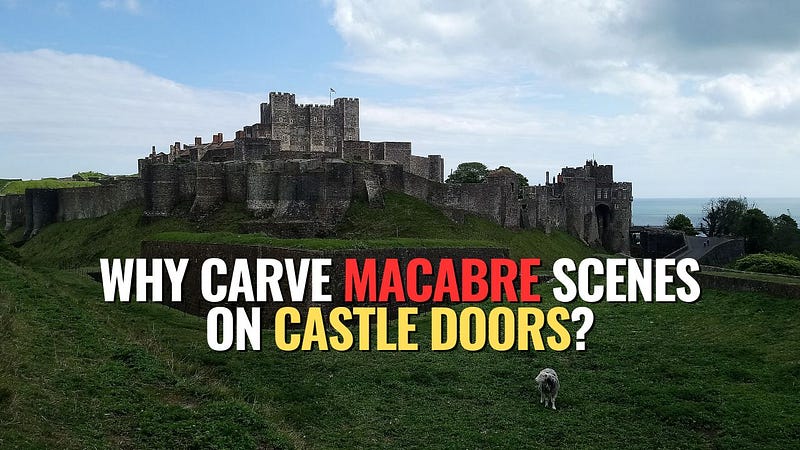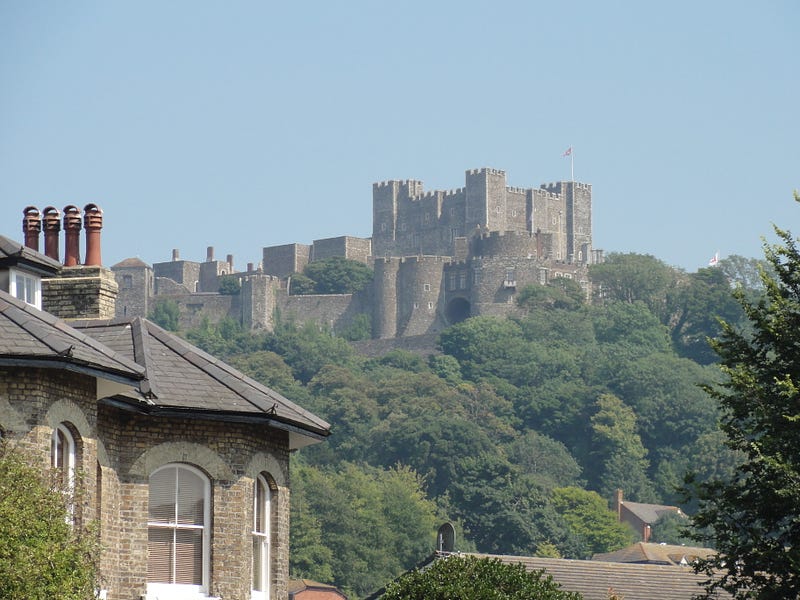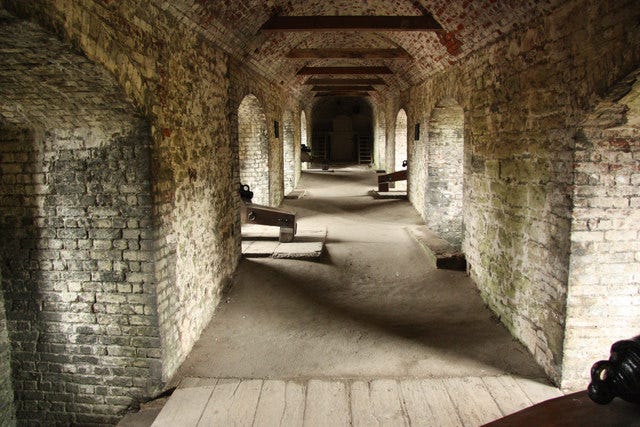# Unraveling the Enigmatic Door Carvings of Dover Castle
Written on
Chapter 1: The Mysterious Discoveries
Recently, wooden doors adorned with grim carvings that illustrate executions were found at Dover Castle in England. The rationale behind these eerie "decorations" remains uncertain, but researchers have put forth several theories.

Dover Castle: A Significant Historical Site
Dover Castle, founded in the 12th century, stands in southeastern England, specifically in Kent, overseeing the shortest maritime route from Britain to mainland Europe. This fortress has long been open to the public, yet researchers continue to unearth fascinating findings on its grounds, enhancing our understanding of this medieval stronghold.
A New Perspective on Dover Castle
The recently discovered doors were situated atop the medieval St. John’s Tower. Historian Paul Pattison from English Heritage, the organization tasked with conserving England's historic sites, labeled the discovery as “extraordinary.” He uncovered them after ascending a ladder to reach the tower's upper level.
In the 1790s, a major overhaul of Dover Castle took place. It transformed from a dilapidated medieval fortress into a modern military garrison, prompted by the looming threat of invasion from Napoleon Bonaparte’s forces. New barracks and defensive structures were constructed, and the older elements of the castle, including St. John’s Tower, were restored. This tower, manned by 6 to 12 soldiers, provided an excellent vantage point over the northern section of the castle.
Chapter 2: The Dark Carvings of the Tower
The long hours of tedious guard duty could be unbearable. When conversation dwindled, soldiers often resorted to using knives or bayonets to etch various drawings and inscriptions into the tower doors, leaving behind a puzzling legacy of their time.
Researchers have identified more than 50 unique “decorations,” with the earliest traced back to 1789 and the latest to 1855.

Exploring the Purpose Behind the Carvings
These carvings likely served as a way for the soldiers to pass the time or perhaps as a means of ensuring their existence would be remembered. “These engravings provide a fascinating glimpse into the thoughts of those soldiers during such a tumultuous time. With the threat of war looming from across the English Channel, Dover saw an increase in activity, with ships populating the port and vibrant military uniforms present throughout the castle and its surrounding town,” remarks Paul Pattison.
Among the inscriptions are significant dates: 1789, coinciding with the French Revolution; 1798, marking the castle's reconstruction; and 1855, when plans for the tower's renovation were initiated. The carvings also feature initials and names such as Downam and Hopper/Hooper.
Of particular interest are the depictions of executions by hanging. One illustration appears to show a soldier facing execution, identifiable by his uniform and hat. Could these be visual records of events that were witnessed? An alternative theory suggests the soldiers may have been depicting their arch-nemesis, Napoleon.
Another striking illustration features a single-masted ship equipped with eight cannons, reminiscent of vessels used by the Royal Navy, customs agents, smugglers, and privateers centuries ago. Additionally, there is an intriguing representation of a goblet adorned with a complex cross design, potentially symbolizing the Christian Holy Communion.

Preserving the Mysterious Doors
Following their discovery, the doors were carefully removed from St. John’s Tower for restoration and future conservation. Layers of paint were meticulously stripped away, and the wood was cleaned and reinforced. The gates are set to be showcased during the Dover Under Siege festival in July, where visitors will have access to the northern fortifications of the castle, including the medieval underground tunnels and later casemates.
Chapter 3: Supporting Content Creators
Dear readers,
I wish to highlight a challenge faced by content creators like myself on Medium.com. The compensation for our work is often minimal, despite the dedication we pour into crafting valuable articles. If you appreciate my writing, please consider supporting me on my “Buy Me a Coffee” page. Your contributions, however small, can inspire me to continue creating engaging and thought-provoking content. Thank you for being part of this journey!

